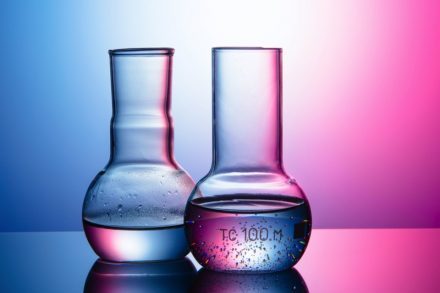Today’s eco-question: Can we just eliminate chemicals from the textile industry? The - Première Vision Paris - Denim Première Vision - Première Vision New York
Honestly, we could just say “no” and end this entire post. But let’s take a look at why the answer is so categorical. Technically, it’s almost impossible to produce textiles on an industrial scale without using chemicals.
Chemical actions make it possible to transform the state of a material, to give it specific qualities. Transformations – such as pre-treatment, dyeing and finishing – require chemical processes. However, the thousands of chemical ingredients used in the industry have different characteristics, and this is where things can be modulated. In short, there is chemistry … and chemistry!

Distinguishing between different substances
Synthetic substances
Initially, synthetic molecules were developed to replace natural resources, whose supply fluctuates due to the vagaries of climate. They are mainly based on petrochemicals, and their processing and use of fossil resources raise concerns due to the pollution generated. Nonetheless, these are the ones that are mostly used.
Natural substances
Here, renewable resources become active ingredients enabling a transformation to occur. Beware of shortcuts here too, because the fact that these resources are natural does not guarantee that they are harmless. In any case, wastewater treatment is fundamental.
Read also: Smart Key : Fashion and chemistry… a dangerous liaison?
Preventing risks
Risky substances
The reticence surrounding chemistry is linked to these substances, which are widely criticised for being dangerous, both for the employees handling these ingredients and for consumers.
Problematic inputs need to be precisely monitored at the end of the production chain, and a number of tools can be used to forestall their ecotoxicity.
Europe’s Reach regulations are a first step towards managing textile chemistry. Then Bluesign, ZDHC and Eco Passport by Oekotex can certify compliance with strict specifications during the transformation processes. For finished products, Standard 100 by Oeko-tex provides a guarantee of safety.
Read also: Today’s eco-question: Can we make technical clothing without using synthetic materials?

Green chemistry
These principles emerged in the 1990s to prevent or lessen chemical toxicity. Based on 12 principles for a safer and more efficient approach to chemistry, a product’s impact is analysed in real time to detect the presence of even trace amounts of known toxic chemicals. The goal is to make it possible to judiciously select raw materials to prevent any risk. The use of renewable resources, and alternatives to solvents and polluting auxiliaries are among the mainstays of this approach.
Lastly, even organic materials come into contact with chemicals in their development. However, certifications such as GOTS ensure that strict environmental criteria are met: materials must be free of hazardous substances, have low toxicity and high biodegradability.
Input control, monitoring, and treatment of gaseous emissions and effluents are key factors for low-impact chemistry!
